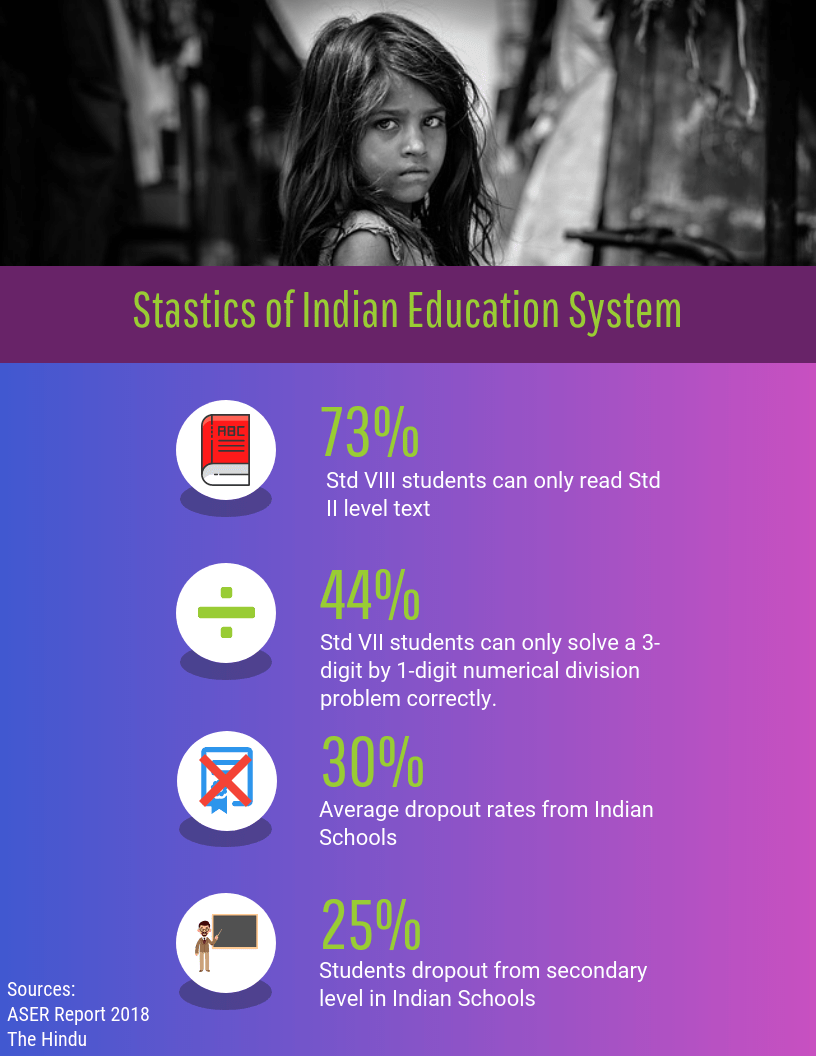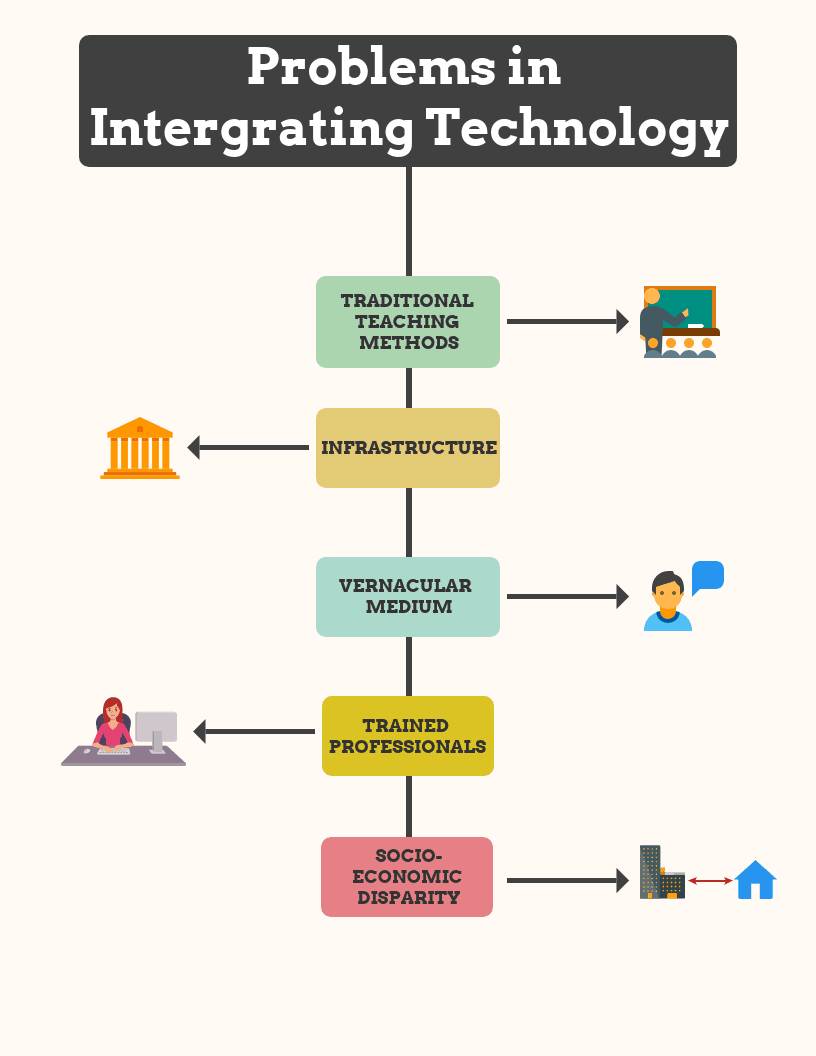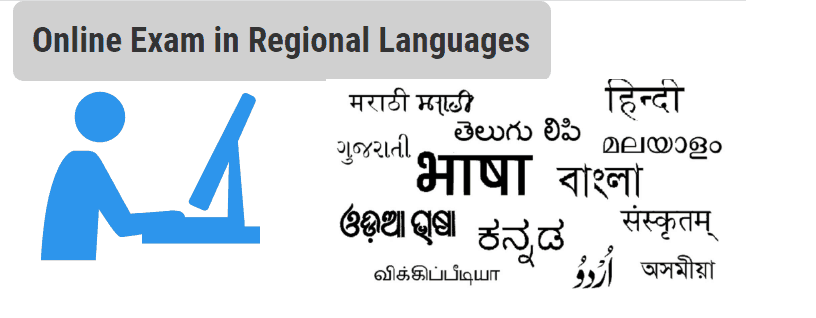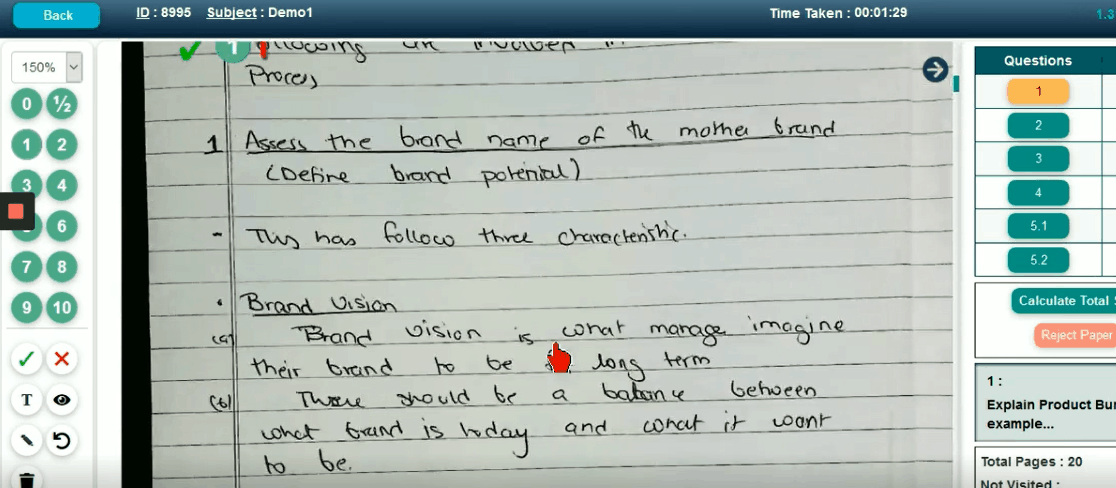
The Greek philosopher Heraclitus said, “Change is the only constant”. The world is constantly changing. Everything we see and everything we do is not the same as it used to be 50 years back. Take a look at modes of communication for example.
Before 1877 everyone used to communicate using letter writing. Then in 1877, the telephone was invented. In 1980 wireless telephones came into the picture and 20 year later people switched to mobile phones, and today we are using smartphones.
Just in the span of about 150 years the communication sector underwent radical changes. The sectors of transport also underwent similar fundamental changes.
Living in the 21st century, technology has become a necessity instead of a luxury. If you are not in contact with technology in any way, shape or form you are probably living under a rock. There is not a single field which is left untouched by the technological revolution.
The television and radio have reached even the most remote areas of India. From buying groceries to paying bills, everything is done online. However, in spite of the growing reach of technology, it is yet to make a mark in the educational sector of India.
There are very few changes that have occurred in the education sector. We have shifted from Gurukuls to fancy buildings, and the language of communication has changed from Sanskrit to English & other regional languages.
This shows that there is a large scope of improvement that can take place in the education sector.

Article Contents
In the survey conducted by ASER centre in 2018, only 73% of students in Std 8th can read a text of Std 2 level. Furthermore, this percentage is unchanged since 2016. While talking about arithmetic, the report says that only 44% of student can solve a basic 3-digit by 1-digit numerical division problem correctly. This indicates that even though we have managed to get children to come to school, we have still not found a way to provide them with quality education.
Quality education is very necessary for every individual. It doesn’t only mean the ability to acquire sustainable livelihood but also refers to the ability to contribute to peaceful and democratic societies and enhance individual well-being.
The problems faced due to lack of use of educational technology are not only seen in rural areas but in urban areas as well.
Due to pressures on educators to finish the syllabus and to complete all the activities, the educators are provided with very little scope to actually implement the aids at their disposal.
They are usually burdened with multiple tasks and worked to the bone to produce the quality results that big-shot schools demand. In this process, the joy of learning is lost while trying to make it in this rat race.
One of the basic tools for providing quality education is technology. There have been phenomenal inventions in the field of education.
Virtual learning with enhanced audio video methodologies was introduced to the world in early 2000. After that interactive learning also came into the picture.
Today the personalized form of teaching is also available in which the mode of teaching can be changed according to the capabilities of the student.
Technology can help to provide comprehensive and effective teaching to an entire classroom of students at the same time.
The visual programmes help the teacher explain the concepts of languages as well as sciences and make it easier for the students to grasp these concepts.
Taking inspiration from Benjamin Franklin’s words,
“Tell me and I forget, teach me and I may remember, involve me and I learn”
We must involve students in the learning process. Once they get involved, their interest in the subject matter increases which leads to higher recollection rates. This helps to fulfill the actual objective of learning.
All this sounds good in theory; however, the problem arises in implementation. Some of the major problems in integrating technology into the Indian education system are:

1. Traditional Teaching Methods
One of the major challenges in introducing technology into the India education system is the reluctance showed by various educational organizations to adopt it in the first place.
Their beliefs in the old methods of teaching render it very difficult to make them favorable towards the new ideas.
People are so comfortable with the traditional approach of teaching that they believe that what worked for the past generations will work for the current too. What they fail to recognize is that with changing times even teaching methods need to be changed.
2.Infrastructure
One of the biggest shortcomings in our country is that we lack the proper infrastructure required for technological advancements. The uneven geographical distribution hinders the growth of educational technology.
The newer teaching and learning methods are unable to reach the backward areas of our country. A lot of public schools until today do not have functional computer labs or access to the internet.
3.Vernacular Medium
More than half the student population in the country study in their respective vernacular mediums and these interactive learning platforms provide their services in English. Hence in the rural areas, people still prefer to study from traditional schools.
People need to work on translating these platforms for the vernacular mediums which would be a tedious task but very important for the complete immersion advanced technology in the education sector.

There are tools and technology available to conduct digital exams in regional languages which can help to eliminate barriers of English Language to be used while adopting technology.
4.Trained Professionals
The teachers are themselves unable to use the computers which makes them inept to teach the students. In spite of the steps taken by the government to better this situation, a large portion of teachers in the country remain uneducated about technology.
This is primarily due to the lack of resources at their disposal. If the teachers were apt, the process of transformation would become easier.
5. Socio-economic Disparity
Due to socio-economic disparity, entire groups are deprived of the advantages of technology.
It takes a lot of time for the upgraded technological pieces of equipment to reach the backward areas of the country. Even though the digitization process is underway, it is not progressing at an admirable speed.
This makes it difficult to introduce educational technology in these areas.
Even though these problems seem insurmountable, they can actually be scaled with determination. For this, it is imperative to first educate the educators themselves about technology and its benefits in teaching.
Ways to Improve Adoption of Technology in Education
Introducing teachers to newer teaching methods and removing the existing taboos surrounding technology will convince them to allow at least a few trial runs of the newer and more effective programs that are available for the students.
Impressing upon them how technology aids not only in teaching but also in reducing the burden of manual work upon the teachers will surely make them more approving towards the fresher and novel ideas of imparting education.
With advanced solutions like onscreen marking system, the workload of the teachers gets reduced and a considerable amount of time is saved.
In urban areas encouraging the management and staff to regularly update their skill set as well as the devices and teaching methods will help to provide improved education to the students.
The students will be more receptive to the knowledge that is imparted to them and remembrance of what they have studied will be comparatively higher.
Encouraging students to make use of various modes of technology to complete their projects and to solve their queries will make them independent, self-reliant as well as techno-savvy.
Technology also helps to create job opportunities for the upcoming generation. Implementation involves proper set-up and training to the teachers. These create new roles for job seekers thereby having a positive impact on our economy too.
They also give a chance to the educators to keep themselves updated with the more effective and new teaching methods and devices.
Gen-Z students can clearly attest to the role played by technology in not only the teaching-learning process but also to gather information to increase their knowledge base. Be it from keeping up-to-date with the news events or keeping a tab on their favorite things, technology has always helped students to keep to remain at the top of their game.
Ideally, this is what education should do: it should provide each man and woman with the resources they require to make them independent and self-sufficient. It is not necessary to introduce the student of today to technology; what is necessary is to introduce them as well as the teachers to the concept and phenomenon of educational technology.
[optin-monster-shortcode id=”cu3msrzgddhzopvlw2mg”]



